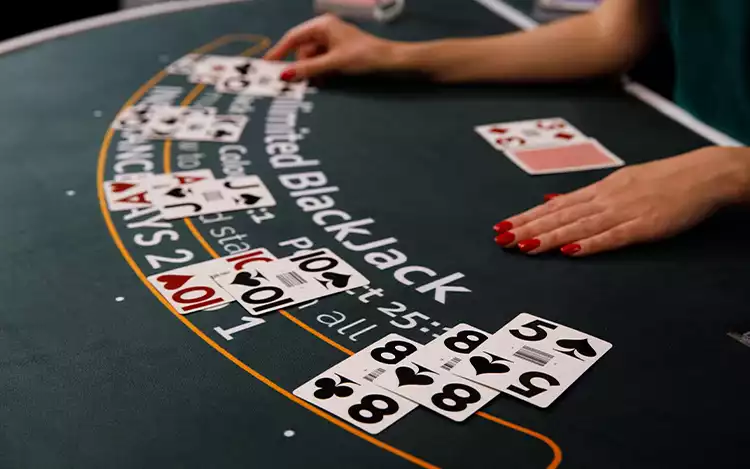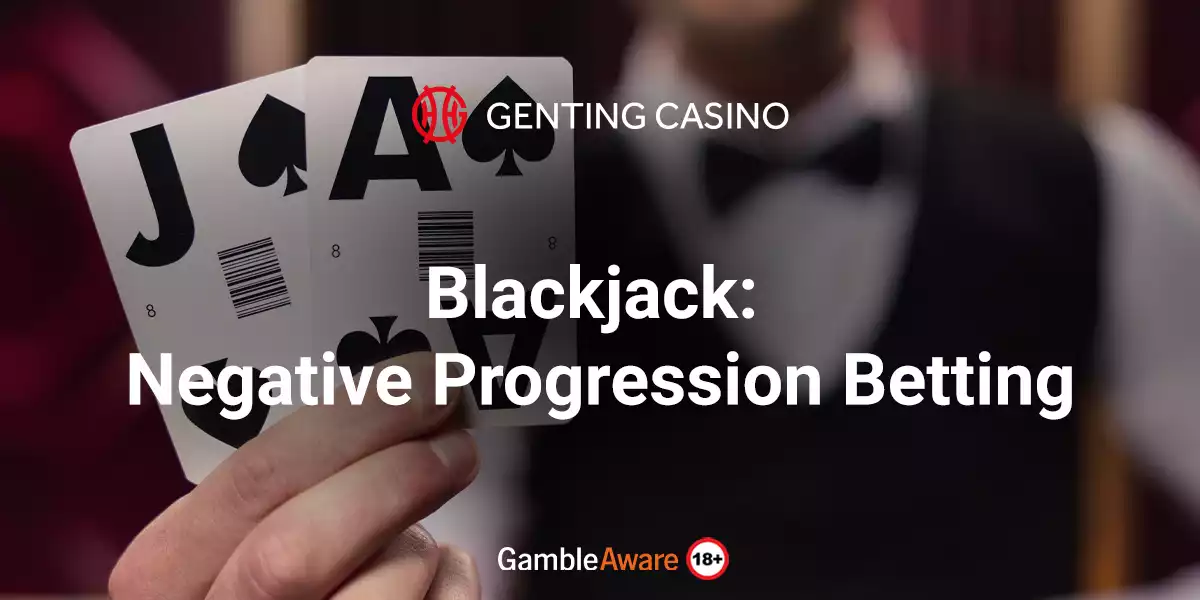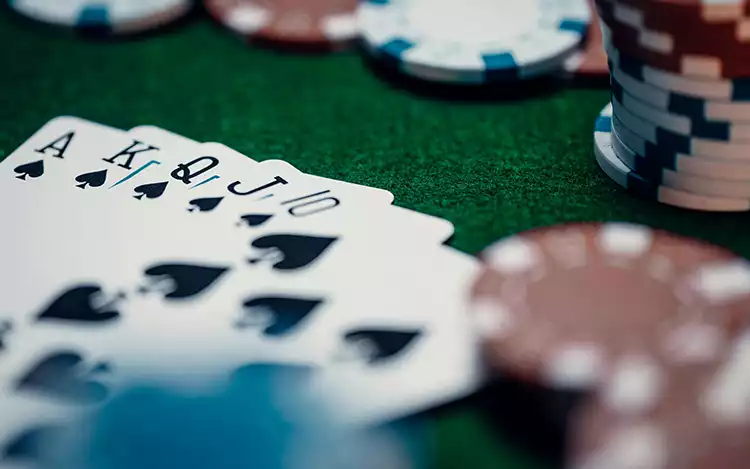Blackjack is one of the most widely known casino games in the world. Blackjack offers gamers some of the best odds in the house when a player uses a good strategy. However, there is a fair share of strategies players can choose from that help them get the most out of their bet.
When playing blackjack, many players invest more energy into betting systems designed to maximize returns and manage bankrolls. Among the different betting systems, the negative progression betting system stands out and has continued to impress gamblers for centuries.
In this article, you’ll get to learn why the negative betting progression is so popular, what it is all about, and some common negative progression betting.
|
⚠️ Disclaimer: This is solely a game of chance, there is no assurance of winning. These strategies are meant to provide guidance on gameplay and assist with bankroll management. The house always maintains the edge. Players should never attempt to recover losses by increasing their bets. |
What is the negative progression of betting in blackjack?
The idea behind applying a negative progression in browser-based blackjack is that you increase your stake every time you lose a wager. However, a big portion of the negative progression is dependent on getting a winning hand eventually and hopefully ending in more cumulative profits.
The appeal of the negative progression betting system is obvious: if you eventually must win, why not increase your bet to recover previous losses? However, during a losing streak, the system can lead to significant loss.
As such, it’s important for players to be careful when using a negative progression, as there is a fine line between using strategy, and loss-chasing which can lead to problem gambling. In a research paper conducted by Ke Zhang and Luck Clark, they described loss-chasing from a neurocognitive perspective that it could “Arise from compromised executive functions including inhibitory control, mood-related impulsivity (urgency) and compulsivity, for which there is compelling evidence in disordered gambling.” In summary, if a player is to use the negative progression betting system, it adheres to two rules:
- Decrease your wager when you win
- Increase your wager when you lose
Types of negative progression betting
Betting progressions are widely divided into positive and negative progression systems. However, there have been arguments about which is better for an enjoyable live blackjack experience, but there is no clear-cut answer.
The truth is that in a positive betting system, you increase your bet after winning, while in a negative betting system you increase your bet after losing. The positive betting system capitalizes on winning streaks to maximize profit, whereas the negative betting system capitalizes on losing streaks to minimize losses.
If you’re going to use the negative progression betting system it’s fundamental to approach them with caution and a clear understanding of their limitations. Some essential factors to consider when using the negative progression include:
- Setting strict bet limits and adhering to them
- Knowing your unit size
- Knowing the progression
- Recognizing the risk involved
- Knowing the basic strategy
- Knowing the table limit
- Emotional control
The negative progression betting system is ideal for players with a high-risk appetite as it can be psychologically draining to increase bet size after every loss to recoup losses. Psychologist Shane Kraus, PhD, director of Behaviors Addictions Lab at the University of Nevada puts it that “Vulnerability is high in people with low incomes who have more to gain with a big win.”
There are different variants of the negative progression betting systems each having its fair share of advantages and limitations. Below we share insight on some of the popular negative progression.

The Martingale System
The martingale system is a popular negative progression that involves doubling a bet following each loss and returning to the base betting wager after any win. This negative betting system is a simple strategy, but dependent on the idea that the player will eventually land a win. As such, players need a very large bankroll to make any gain using this system. For example, if a blackjack player chooses to wager £20 on blackjack the table below explains how the bet progression works in the martingale system:
|
Round |
Bet |
Outcome |
New Bet | ||||
|
Round 1 |
£20 |
Lose |
£40 | ||||
|
Round 2 |
£40 |
Lose |
£80 | ||||
|
Round 3 |
£80 |
Win |
£20 | ||||
|
Round 4 |
£20 |
Lose |
£40 | ||||
|
Round 5 |
£40 |
Win |
£20 |
The D'Alembert System
The D’Alembert system is similar to the martingale system, but the main difference is that the player increases their bet by one unit after each loss and decreases it by one unit after each win. For example, if a player begins playing with a base unit of £10:
|
Round |
Bet |
Outcome |
New Bet | ||||
|
Round 1 |
£10 |
Lose |
£20 | ||||
|
Round 2 |
£20 |
Lose |
£30 | ||||
|
Round 3 |
£30 |
Win |
£20 | ||||
|
Round 4 |
£20 |
Win |
£10 | ||||
|
Round 5 |
£10 |
Loss |
£20 |
The Fibonacci System
The Fibonacci betting strategy is a negative betting system that is based on the Fibonacci sequence. The Fibonacci sequence is one where each number is the sum of the two preceding ones: 1, 1, 2, 3, 5, 8, etc. When you lose a hand, you move to the next number in the Fibonacci sequence to determine your next bet. Whereas when you win a hand, you move back two numbers in the sequence. The main idea is that eventually, a win will recover all your previous losses. For example, if a player begins playing with a base unit of £10:
|
Round |
Fibonacci Sequence |
Bet |
Outcome | ||||
|
Round 1 |
1 |
£10 |
Lose | ||||
|
Round 2 |
1, 1 |
£10 |
Lose | ||||
|
Round 3 |
1, 1, 2 |
£20 |
Lose | ||||
|
Round 4 |
1, 1, 2, 3 |
£30 |
Win | ||||
|
Round 5 |
1, 1, 2 |
£20 |
Lose |
The Labouchere System
When using the Labouchere system, players use the sequence of numbers that they prefer to determine their next wager. For a seamless casino gaming experience, players should choose a sequence based on their bankroll because the profit is calculated from the total value of numbers in the chain.
The main principle of the Labouchere system is to bet the sum of the last numbers at the left and right sides of the sequence. When you win a wager, you delete the last two numbers in the sequence, while if you lose a wager, you add the last wager to the right end of the sequence. To many players, the Labouchere system is like a disguised form of the Martingale, it just spreads the geometric progression across multiple bets. For example, let's say we are starting with the sequence 1-2-3-4-5 and a base unit of £1 the table below explains the bet sequence:
|
Round |
Sequence |
Outcome |
Bet | ||||
|
Round 1 |
1, 2, 3, 4, 5 |
Win |
£6 | ||||
|
Round 2 |
2, 3, 4 |
Lose |
£6 | ||||
|
Round 3 |
2, 3, 4, 6 |
Win |
£8 | ||||
|
Round 4 |
3, 4 |
Win |
£7 |
Play Blackjack Responsibly with Negative Progression System
When playing blackjack, in a live casino setting, with a negative progression, it is characterized by increasing wagers after losses. It relies on the assumption that a win will eventually help the player recover from losses with the hope of generating profit. Systems like the Martingale, Labouchere, Fibonacci, and D'Alembert have offered different approaches that a player can employ.
However, they are vulnerable to continuous losing streaks, which reduces a player's bankroll. Although many players using the negative progression system have reasons to believe that past outcomes influence future random events, it is risky to rely solely on luck in these systems, despite the already stated advantage for significant wins.








